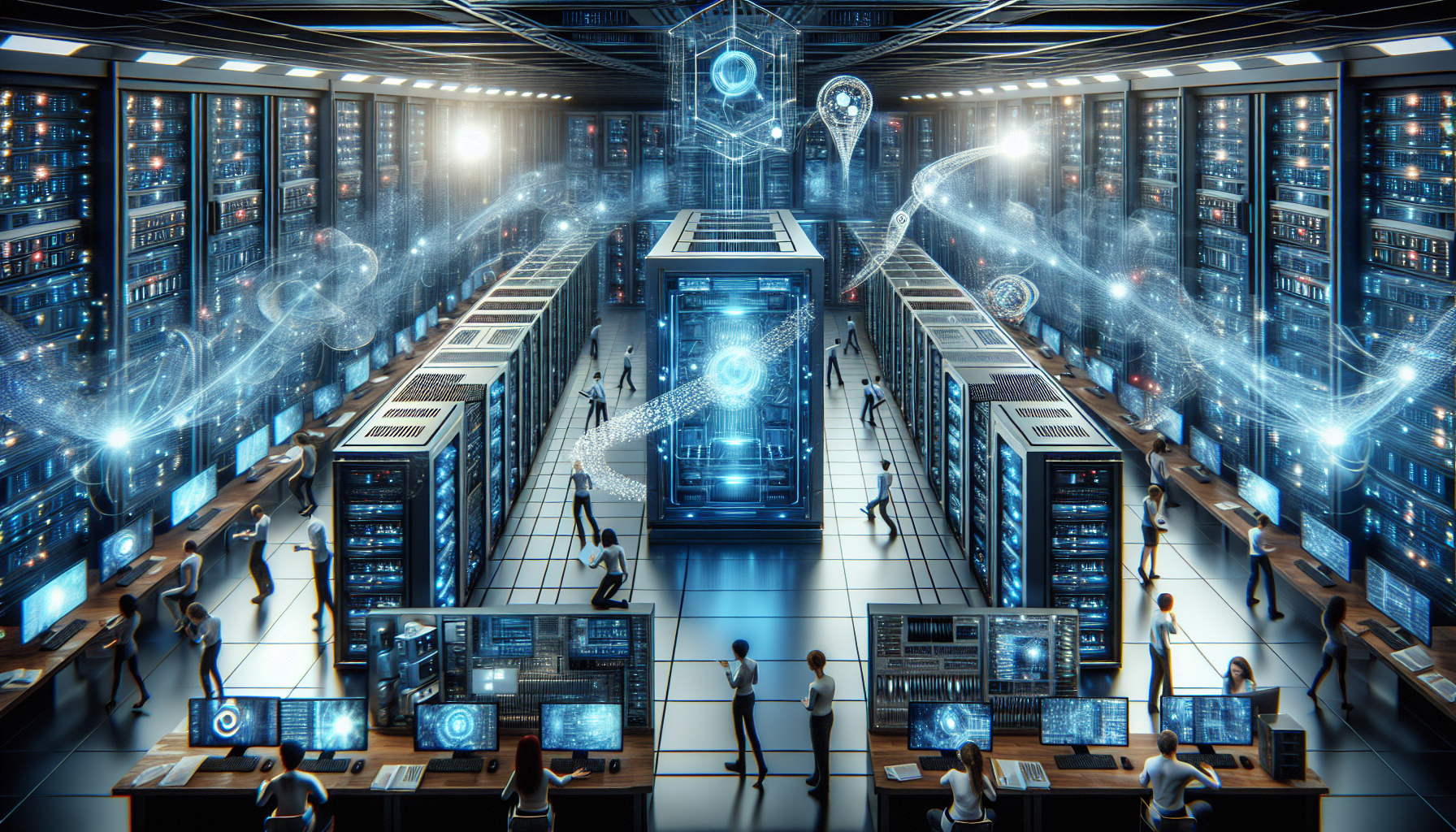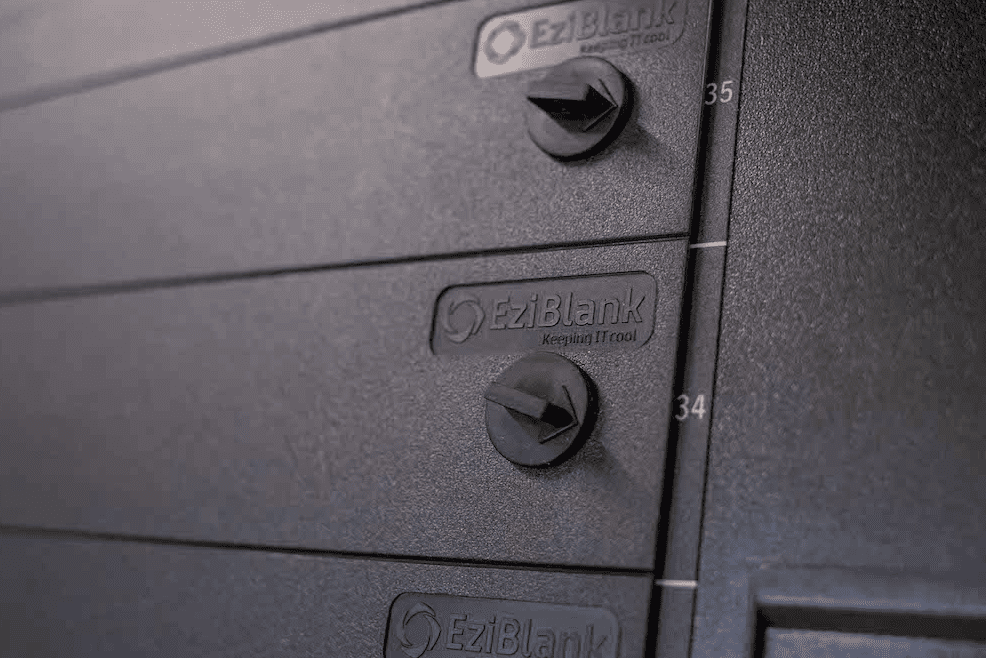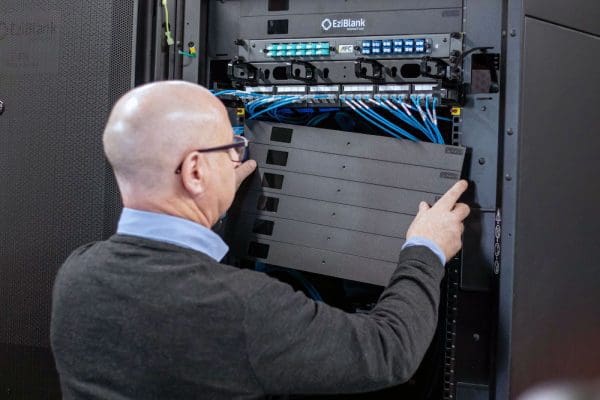In today’s digital age, data centers have become the backbone of our connected world. These high-tech facilities house the servers, data storage systems, and networking equipment that power the internet, cloud computing, and the vast amounts of data we generate and consume every day. As our reliance on technology continues to grow, the importance of data centers cannot be overstated.
Definition of a Data Center
At its simplest, a data center is a physical facility that organizations use to house their critical applications and data. A data center’s design is based on a network of computing and storage resources that enable the delivery of shared applications and data.
Data centers contain a network infrastructure that connects servers (physical and virtualized), data center services, storage, and external connectivity. The storage infrastructure in a data center is used to hold valuable data. The computing resources in a data center provide the processing, memory, local storage, and network connectivity that drive applications.
The key components of a data center design include:
- Routers
- Switches
- Firewalls
- Storage systems
- Servers
- Application-delivery controllers
- Cooling Systems
What is a Data Center?
A data center is a facility that provides a physical location for placing computing systems and other digital components such as data. It provides a network and data storage space that can be used by companies, organizations, or other agencies to organize, process, store and disseminate data on a large scale.
Data centers house business-critical data and applications. Therefore, data center security is critical in data center design. The core components of a data center allow for the efficient processing, storage, and distribution of large amounts of data. These data center components require significant infrastructure to support the center’s hardware and software.
Key Components of a Data Center
The core components of a data center include:
- Servers: Servers are pieces of hardware or software that provide functionality to a data center. They are connected to networks to make data accessible to computers and are typically housed in server racks.
- Networking: Networking equipment enables the storage and processing of applications and data through switching, routing, load balancing, analytics, etc. The network infrastructure connects servers, data center services, storage, and external connectivity to end-user locations.
- Storage: Data center storage consists of technologies, software, and devices that allow for the storing of data and applications within a data center. Storage systems are used to hold valuable data.
- Software: Software is the non-physical component of a computer system that comprises the programs, procedures, and routines involved in the efficient operation of a computer system.
- Cabling infrastructure: The foundation of data centers lies within the cabling infrastructure as it enables the power and data transmissions that are critical to operations. Failure to properly manage these systems can lead to serious issues such as downtime and large expenses.
- Power infrastructure: Physical infrastructure such as rack PDUs, remote power panels, busways, floor PDUs, and UPSs are necessary to provide power to IT equipment. Backup power is usually supplied by a generator to minimize downtime.
- Cooling systems: Data center cooling equipment such as blanking panels, computer room air conditioning (CRAC) and computer room air handler (CRAH) units are designed to always keep the facility at an ideal temperature and to prevent critical IT equipment from overheating.
- Physical security: Data centers may include alarms, electronic door locks, biometric scanners, and other safety measures to protect the data and assets inside.
Types of Data Centers
There are several types of data centers, each serving specific purposes and catering to different organizational needs. The five main types are enterprise data centers, colocation data centers, hyperscale data centers, edge data centers, and modular data centers. Each of these types varies in terms of their typical size, power capacity requirements, location in the network, and purpose.
Enterprise Data Centers
Enterprise data centers are private facilities that are owned and operated by an individual organization to meet its own IT infrastructure requirements. These data centers are particularly well-suited for organizations that require customized networks or can benefit from economies of scale due to significant amounts of traffic or data being processed and managed within their data center. Organizations may choose to maintain enterprise data centers for reasons such as regulatory compliance, privacy protection, superior performance, enhanced security, or cost-effectiveness. These data centers can be located either on-premises or off-premises, depending on factors such as power availability, water accessibility, connectivity, and security.
Managed Services Data Centers
Managed services data centers, also commonly referred to as “managed colocation”, are typically offered by managed service providers (MSPs). These services involve third-party management of data center infrastructure, including servers, storage, networking, and security systems. Skilled professionals provide continuous monitoring and maintenance, allowing organizations to outsource IT operations such as server and storage management and facilities operations. Managed services data centers offer adaptability across various setups, including on-site, colocation, and cloud data center environments.
Colocation Data Centers
Colocation data centers, also known as multi-tenant data centers (MTDCs), are used by multiple organizations – often 20 or more – to house their computing hardware, servers, and supporting infrastructure, such as power, cooling, and networking equipment, in an off-site location. These third-party facilities are particularly useful for organizations that lack the space or IT resources to manage their own enterprise data center, freeing up IT personnel and financial resources for other initiatives. Colocation data centers allow organizations to lease the space they require to host their data, with the ability to quickly scale up or down to meet changing needs. These facilities provide organizations with high availability (uptime), robust bandwidth capacity, and low latency access to data.
Cloud Data Centers
Cloud data centers are distributed data centers run by third-party service providers. These data centers let you rent both space and infrastructure as needed via cloud services. You can typically provision virtual data centers within hours. Cloud data centers are cost-efficient since they reduce costs surrounding hardware investment, IT staff, and maintenance. They also allow businesses to scale up or down at record speeds, share resources, and enjoy optimal uptime, bandwidth, and redundancy.
By understanding the different types of data centers and their unique characteristics, organizations can make informed decisions about which type best suits their specific needs and requirements. Whether it’s the customization and control of an enterprise data center, the flexibility and cost savings of colocation, or the scalability and efficiency of cloud data centers, each type offers distinct advantages that can be leveraged to support an organization’s IT infrastructure and business goals.
Why Are Data Centers Important?
Data centers play a crucial role in supporting businesses and enabling them to process, store, and analyze massive volumes of data. They offer centralized data management, allowing organizations to efficiently monitor, maintain, and back up critical data. This consolidation simplifies operations and enhances the visibility of data flows, which is essential for data governance and compliance with regulatory standards.
Scalability is one of the most compelling reasons for a data center. As businesses grow, so does their data and the need for computational power. Data centers provide scalable solutions that can grow with the business, ensuring they always have the necessary resources to support their operations and growth objectives. Companies experiencing rapid growth or seasonal changes in demand can easily match storage infrastructure to their changing equipment needs without building new infrastructure.
Data centers offer a high level of security, protecting sensitive information with multiple layers of security measures such as biometric authentication, surveillance cameras, firewalls, and encryption. In an age where data breaches are not a matter of “if” but “when,” a data center stands as the first line of defense. With advanced physical and cybersecurity measures that are often cost-prohibitive for individual organizations to implement, data centers offer a fortified bastion to protect critical digital assets.
With redundancy and disaster recovery capabilities, data centers are essential for businesses that rely heavily on data. Using redundant, multiple systems ensures data is always available, while disaster recovery can quickly recover data during a natural disaster or cyber-attack. Data centers deploy disaster recovery and business continuity solutions to safeguard against data loss, downtime, and disruptions. Backup systems, redundant infrastructure, failover mechanisms, and disaster recovery plans ensure data resilience and uninterrupted operations, minimizing risks and ensuring business continuity in adverse situations.
While setting up a data center may seem like a significant investment, it offers long-term cost savings. By consolidating resources, businesses can reduce overheads related to power, cooling, and space. Furthermore, the economies of scale achieved by data centers can lower the total cost of ownership for IT infrastructure. The cost-effectiveness of data centers goes beyond just direct cost savings – they enable businesses to avoid large capital expenditures by leveraging the as-a-service model, where they only pay for what they use. This flexible pricing structure allows businesses to scale resources up or down based on demand, ensuring they’re not overspending on unused capacity.
Evolution of Data Centers
Data centers have undergone a remarkable evolution since their inception in the 1940s. From the colossal ENIAC, the first general-purpose computer developed during World War II, to the sophisticated and energy-efficient facilities that power the internet today, data centers have become the backbone of our digital world.
The origins of modern data centers can be traced back to the mainframe era of the 1960s. These early facilities, commonly referred to as “computer rooms,” were meticulously designed to control environmental factors such as temperature and humidity, to prevent the sensitive equipment from overheating or otherwise failing. In 1951, the USSR established its first computer room, which housed a computer that could perform 3,000 operations per minute.
During the 1960s, large computers occupied entire rooms, and these rooms were expensive to maintain, leading businesses to rent out unused spaces to other companies. The transition from vacuum tubes to solid-state devices like transistors in the 1960s made computers more efficient, reliable, and cost-effective.
The 1970s saw significant technological advancements, with Intel releasing the first commercial microprocessor, the 4004, in 1971. By 1973, US data centers began documenting official disaster recovery plans, and in 1978, SunGuard pioneered the first commercial disaster recovery structure by leasing 30,000 square feet for storage servers in Philadelphia.
The 1980s marked the emergence of the microcomputer era, largely attributed to the introduction of the IBM Personal Computer (PC) in 1981. These compact and more affordable computers revolutionized the industry by replacing the large, room-filling systems that were previously prevalent in offices.
The 1990s saw a surge in the need for data centers due to the dot-com boom. Companies required fast internet connections and reliable systems to establish an online presence. Microcomputers, now called servers, began to populate old computer rooms, transforming them into modern data centers.
During the 2000s, the data center industry experienced an explosive expansion driven by the rising demand for digital services and storage. This growth came at a significant cost, with the average data center consuming as much energy as 25,000 homes by 2007. Recognizing the environmental impact, the industry began focusing on sustainability and energy efficiency, adopting strategies such as virtualization, consolidation, and improved cooling technologies.
The 2010s marked a significant transformation for data centers. Operators focused on virtualization to address the limitations of legacy servers, which lacked flexibility and scalability. Modern data centers evolved to provide a single infrastructure for hundreds of businesses, offering flexibility and a wide range of services for content and data distribution.
Looking ahead, the future of data centers holds great potential. The industry is poised to ride on a wave of growth as the increasing reliance on cloud computing among businesses shows no signs of abating. In this landscape, colocation providers act as the indispensable bridge, merging the advantages of cloud computing with the security and control of dedicated infrastructure.
With multiple data center locations across North America, Evoque Data Center Solutions offers a variety of colocation services that enhance operational resilience and flexibility. Every one of their colocation facilities offers a carrier-neutral, connectivity-rich environment backed up by multiple redundancies to ensure continuous system uptime.
Key Data Centers Insights
In the rapidly evolving digital landscape, data centers have emerged as the cornerstone of our connected world. From enabling businesses to process and store vast amounts of data to supporting the ever-growing demands of cloud computing, these high-tech facilities play a vital role in powering our digital infrastructure. As organizations continue to rely heavily on technology to drive growth and innovation, the importance of data centers will only continue to grow.
As we look to the future, it is clear that data centers will remain at the forefront of technological advancement. With the increasing adoption of cloud computing, the demand for secure, reliable, and scalable data center solutions will continue to rise. By leveraging the latest technologies and best practices, data center providers will be well-positioned to meet the evolving needs of businesses and support the ongoing digital transformation of our society.



